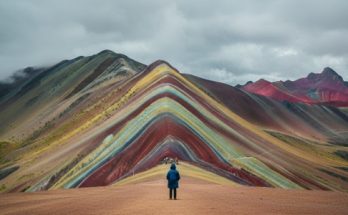The question of when to trek the Andes seems simple, but the answer is anything but. Beyond the well-trodden Inca Trail, the vast mountain range offers a dizzying array of experiences that shift dramatically with the seasons. The truth is, there is no single “best” time to go; there is only the best time for you.
The ideal season depends entirely on your personal definition of adventure. Are you:
- Chasing flawless, postcard-perfect photographs?
- Seeking the profound silence of an empty trail?
- Or hoping to witness a culture that is as alive and vibrant as the mountains themselves?
Forget a one-size-fits-all calendar.
Instead, let your goal be your guide.
By matching your trekking style to the rhythm of the Andes, you can design a journey that goes beyond a simple walk in the mountains and becomes the experience of a lifetime.
For the Photographer: Chasing Crystal-Clear Skies
If your goal is to capture those iconic, razor-sharp images of snow-dusted peaks against a brilliant blue sky, then your target is the peak of the dry season. This is the period when the atmosphere is at its clearest, the trails are stable, and the weather is at its most predictable.
In the mountains of Peru and Bolivia—home to legendary treks like the Ausangate Circuit with its rainbow-colored slopes or the rugged Cordillera Real—this window falls between May and September. The days are typically sunny and bright, making every glacial lake and jagged ridgeline pop with incredible clarity. At night, the cold, dry air reveals a breathtaking canopy of stars, a spectacle in itself. The trade-off for this meteorological perfection is twofold: the nights are intensely cold, and you’ll be sharing the trails with more fellow adventurers.
Further south in Patagonia, the seasons flip. For treks around Chile’s Torres del Paine or Argentina’s Fitz Roy, the peak season runs from November to March. This is the southern hemisphere’s summer, offering long daylight hours and the highest probability of seeing the famous granite towers without their common shroud of clouds.
For the Solitude Seeker: Embracing Moodier Landscapes
For those who believe the real magic of the mountains is found in their wildness and silence, the crowded peak season can feel counterintuitive. If your priority is a more personal and introspective journey, the “shoulder seasons” are your secret weapon. These transitional months—typically April to May and October to November in Peru and Bolivia—offer a completely different Andean experience.
As the last of the rains subside in April or the first hints of them arrive in October, the valleys are transformed into a canvas of lush, vibrant greens. Wildflowers are often in bloom, rivers run fuller, and a dramatic, moody atmosphere can settle over the landscape, with mist weaving through the passes. The greatest reward, however, is the quiet. Trails like the Lares Valley in Peru, known for its deep connection to Quechua communities, feel more intimate and authentic. While you must be prepared for unpredictable weather and the occasional downpour, the payoff is a profound sense of solitude and the feeling of having the Andes all to yourself.
For the Cultural Pilgrim: Trekking Through Festivals and Tradition
Perhaps your goal is to connect with something deeper than just scenery. For a cultural pilgrim, the Andes are not a static landscape but a living one, home to traditions that stretch back millennia. Timing your trek to coincide with a local festival can transform your hike from a physical challenge into a vibrant cultural immersion.
Many of these celebrations are tied to the land and the changing of the seasons, often occurring at the beginning of the dry season. The most spectacular example is the Qoyllur Rit’i (Star Snow) festival, held in late May or early June in the Sinakara Valley near Peru’s Ausangate massif. Tens of thousands of pilgrims from across the Andes converge at the foot of a glacier to dance, pray, and celebrate. Trekking in this region during this time means your journey’s soundtrack isn’t just the wind, but the sound of flutes and drums echoing through the mountains. It is a powerful reminder that these trails are not just recreational routes; they are ancient pathways of faith and community. Planning your trek around such an event offers a rare opportunity to witness the soul of the Andes, not just its stunning physique.


